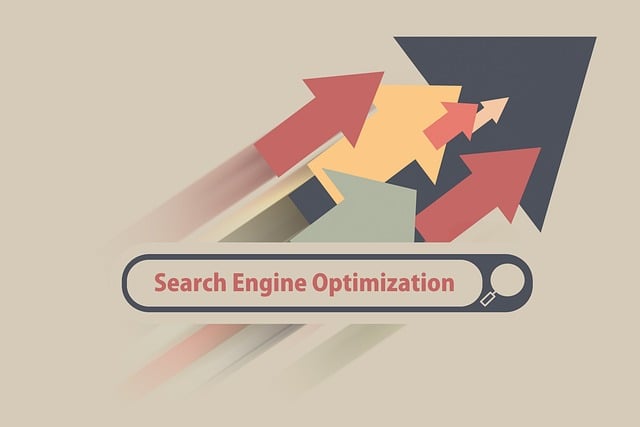TL;DR:
Meta tags are crucial for On-Page SEO, acting as intermediaries between website content and search engines' algorithms. Key components include:
– Title Tags: Descriptive, unique, keyword-rich headings that capture user interest and improve rankings (up to 60 characters).
– Meta Descriptions: Concise (150-160 chars) summaries that entice clicks and boost click-through rates.
– Open Graph Tags: Enhance content sharing on social media, increasing visibility and potential traffic.
– Canonical Tags: Mitigate duplicate content issues, ensuring search engines index the correct URL.
Effective optimization involves:
– Balancing keyword research with natural language use.
– Avoiding overoptimization, keyword stuffing, and clutter.
– Tailoring tags to user intents for distinct page purposes.
Continuous monitoring using tools like Google Analytics is essential to track CTRs and keyword rankings, enabling iterative refinements that drive improved SEO performance.
In the realm of digital marketing, on-page SEO is a cornerstone strategy. A vital component of this strategy lies in meta tag optimization—the art of crafting compelling titles, descriptions, and keywords that not only enhance search engine rankings but also captivate users on social media platforms. This comprehensive guide delves into understanding, implementing, and refining meta tags, offering practical insights for every step of the process, from defining key terms to analyzing performance.
Understanding Meta Tags: An Overview for On-Page SEO

Meta tags are essential elements in the world of On-Page SEO, serving as a bridge between your website content and search engine algorithms. These hidden yet powerful codes provide search engines with critical information about your web pages, enabling them to understand the context and relevance of your content. There are two primary meta tags worth focusing on: title tags and meta descriptions.
The title tag, often seen as the page title in browser tabs, is a crucial factor in capturing the user’s attention and search engine rankings. It should be descriptive, unique, and include relevant keywords to accurately represent the page content. On the other hand, the meta description acts as a brief overview or teaser, providing a snapshot of the page content below the link in search results. Crafting compelling meta descriptions can increase click-through rates, as they entice users to explore further.
Importance of Meta Tag Optimization in Boosting Search Rankings

Meta tag optimization plays a pivotal role in enhancing your website’s visibility and search rankings, making it an indispensable component of any robust On-Page SEO strategy. These tags serve as a bridge between your web content and search engines’ algorithms, providing crucial information about the page’s content, relevance, and value. By optimizing meta tags, you ensure that search engine crawlers can quickly understand and interpret your webpage, which can significantly impact how it appears in search results.
Well-optimized meta tags help search engines index your website more effectively by offering a clear picture of your page’s topic and purpose. This, in turn, increases the likelihood of your pages being featured higher up in search rankings, as search algorithms prioritize content that accurately matches user queries. Furthermore, optimized meta descriptions can boost click-through rates (CTRs), as they provide enticing summaries that entice users to interact with your webpage instead of navigating away.
Types of Meta Tags: A Comprehensive Guide

Meta tags are essential components of on-page SEO, acting as a bridge between your website and search engine algorithms. They provide critical information about your web pages, helping search engines understand their content and context. There are two primary types of meta tags: meta titles and meta descriptions.
Meta titles, also known as page titles or heading tags, are crucial for both users and search engines. This tag appears at the top of a web browser and is a direct reflection of your page’s content. Search engines use it to index pages and display them in search results. Meta descriptions, on the other hand, offer a concise summary of the page’s content, encouraging clicks with compelling language. While meta titles carry more weight for SEO, both tags work together to enhance visibility and drive traffic.
How to Craft Effective Title Tags and Meta Descriptions

Crafting compelling title tags and meta descriptions is a powerful strategy within on-page SEO. These elements are often the first things search engine users encounter, making them vital for capturing attention and driving clicks. A well-crafted title tag should be concise, typically under 60 characters, and include your primary keyword while also reflecting the page’s content accurately. For instance, if you’re writing about ‘best vegan recipes,’ ensure your title tag includes this phrase to signal search engines and users what your page is about.
Meta descriptions, appearing below the title tag in search results, provide a brief overview of the page’s content. Aim for around 150-160 characters here, as this is the approximate length many users scroll to when perusing search results. Include a call to action within the description, such as ‘Explore delicious plant-based meals,’ to encourage clicks. Remember, while meta descriptions don’t directly impact rankings, they can significantly affect click-through rates, which indirectly influence your site’s overall SEO performance.
Optimizing Meta Keywords: Strategies and Best Practices

Optimizing meta keywords is a crucial part of on-page SEO that often gets overlooked. While search engines have evolved to understand context better, providing clear and relevant keywords can still significantly enhance your page’s discoverability. Start by conducting thorough keyword research to identify terms with high search volume and low competition. Incorporate these keywords naturally into both the title tag and meta description—the former should be a concise summary of the content while the latter offers a more detailed glimpse, enticing users to click.
When implementing best practices, avoid keyword stuffing at all costs. It not only harms readability but also can trigger penalties from search engines. Instead, focus on creating compelling, informative tags that accurately represent your page’s content. Additionally, keep in mind that meta keywords are not the sole determinant of ranking; other factors like quality content, user engagement, and site speed play equally important roles. Therefore, ensure your overall On-Page SEO strategy is holistic, balancing optimized meta tags with robust content and technical optimization for optimal results.
The Role of Open Graph Tags in Social Media Optimization

Open Graph tags play a pivotal role in the realm of On-Page SEO, especially when it comes to social media optimization. These tags act as a bridge between your website and social media platforms, providing essential metadata that helps in sharing content on these channels. When a user intends to share a webpage, the Open Graph tags instruct social media sites on how to display the post, including title, description, and even images, thus enhancing the likelihood of engagement and click-through rates.
By implementing Open Graph tags effectively, webmasters can ensure that their content is shared in a visually appealing and compelling manner across various social media platforms. This strategic approach not only boosts social media presence but also indirectly contributes to improved search engine rankings by increasing visibility and drive more traffic to the site via social channels, thereby reinforcing the overall On-Page SEO strategy.
Canonical Tags: Preventing Duplicate Content Issues

Canonical tags play a vital role in on-page SEO, acting as a solution to duplicate content issues that can plague websites. Duplicate content can arise from various sources, such as multiple pages displaying similar information or different versions of the same page served through different URLs (like HTTP and HTTPS). Search engines, particularly Google, frown upon this practice as it dilutes the value of each page’s ranking potential.
By implementing canonical tags, webmasters can designate a preferred version of a webpage, indicating to search engines which URL should be indexed and credited for that specific content. This helps prevent duplicate content penalties while ensuring search engines understand the hierarchy and relationships between similar pages. Proper use of canonical tags contributes positively to on-page SEO efforts, enhancing the website’s overall visibility in search results.
Analyzing and Measuring Meta Tag Performance

Analyzing and Measuring Meta Tag Performance is a crucial aspect of On-Page SEO strategies. By tracking and evaluating how your meta tags are functioning, you gain valuable insights into user engagement and search engine rankings. Tools like Google Analytics provide detailed data on click-through rates (CTRs), allowing you to assess the effectiveness of your title tags in attracting clicks from potential visitors.
Additionally, monitoring keyword rankings for specific meta descriptions enables you to refine and optimize these tags over time. This iterative process ensures that your meta elements remain relevant and aligned with current search trends, thereby enhancing your website’s visibility and clickability through organic search results.
Common Mistakes to Avoid During Meta Tag Implementation

When implementing meta tags for On-Page SEO, several common pitfalls can be easily avoided with careful planning and an understanding of best practices. One frequent mistake is overoptimizing meta descriptions, leading to clutter and a loss of focus. Each description should be unique, engaging, and accurately represent the page content—a concise summary that encourages clicks. Avoid keyword stuffing, as it not only dilutes your message but also confuses both search engines and potential visitors.
Another blunder is neglecting to tailor meta tags for different user intents. Every web page should have a specific purpose, and its meta data should reflect this. For instance, duplicate meta titles or descriptions across similar pages can confuse search algorithms. Always aim for relevance by creating unique content that aligns with user expectations when they interact with search results.
